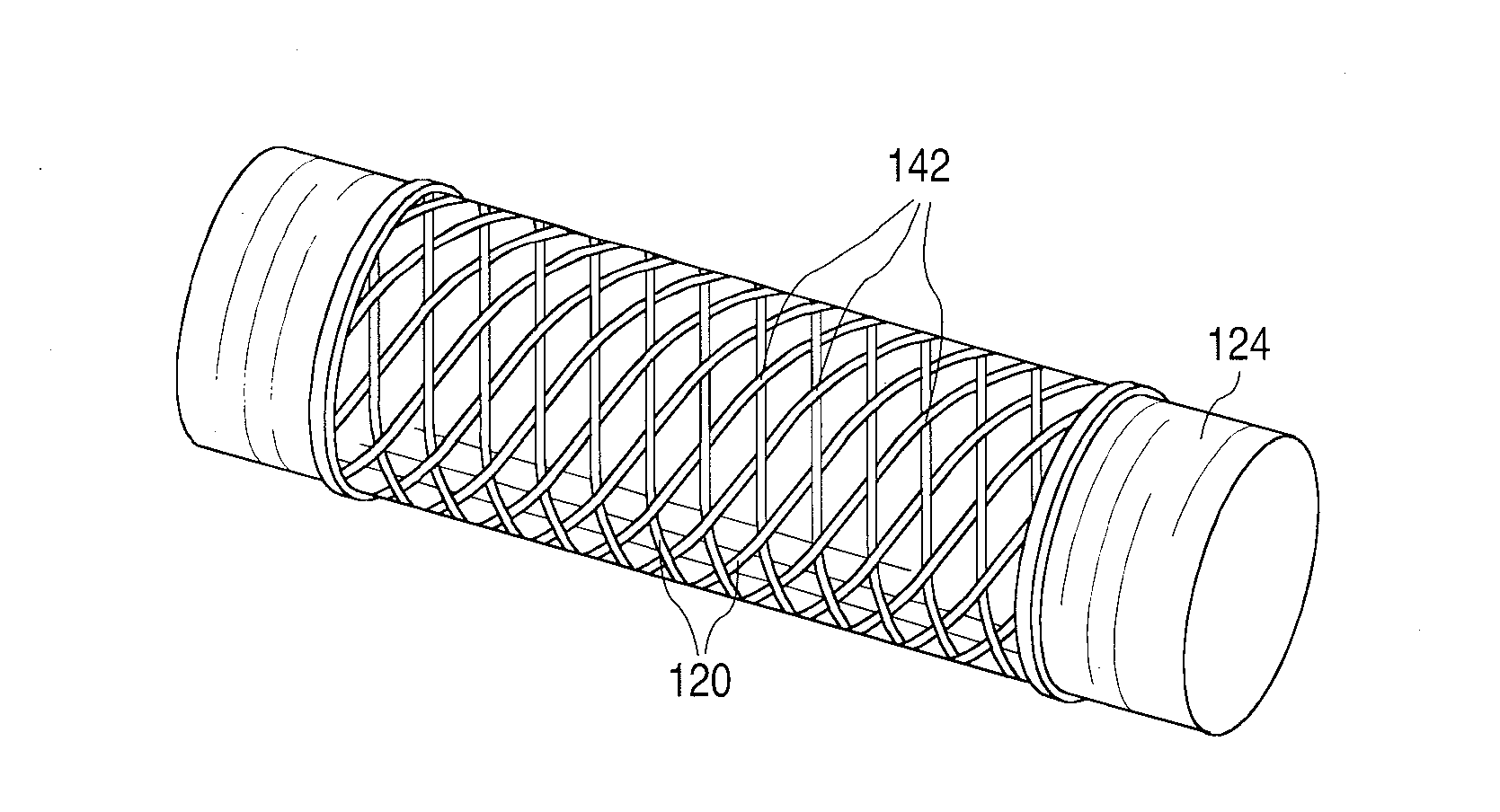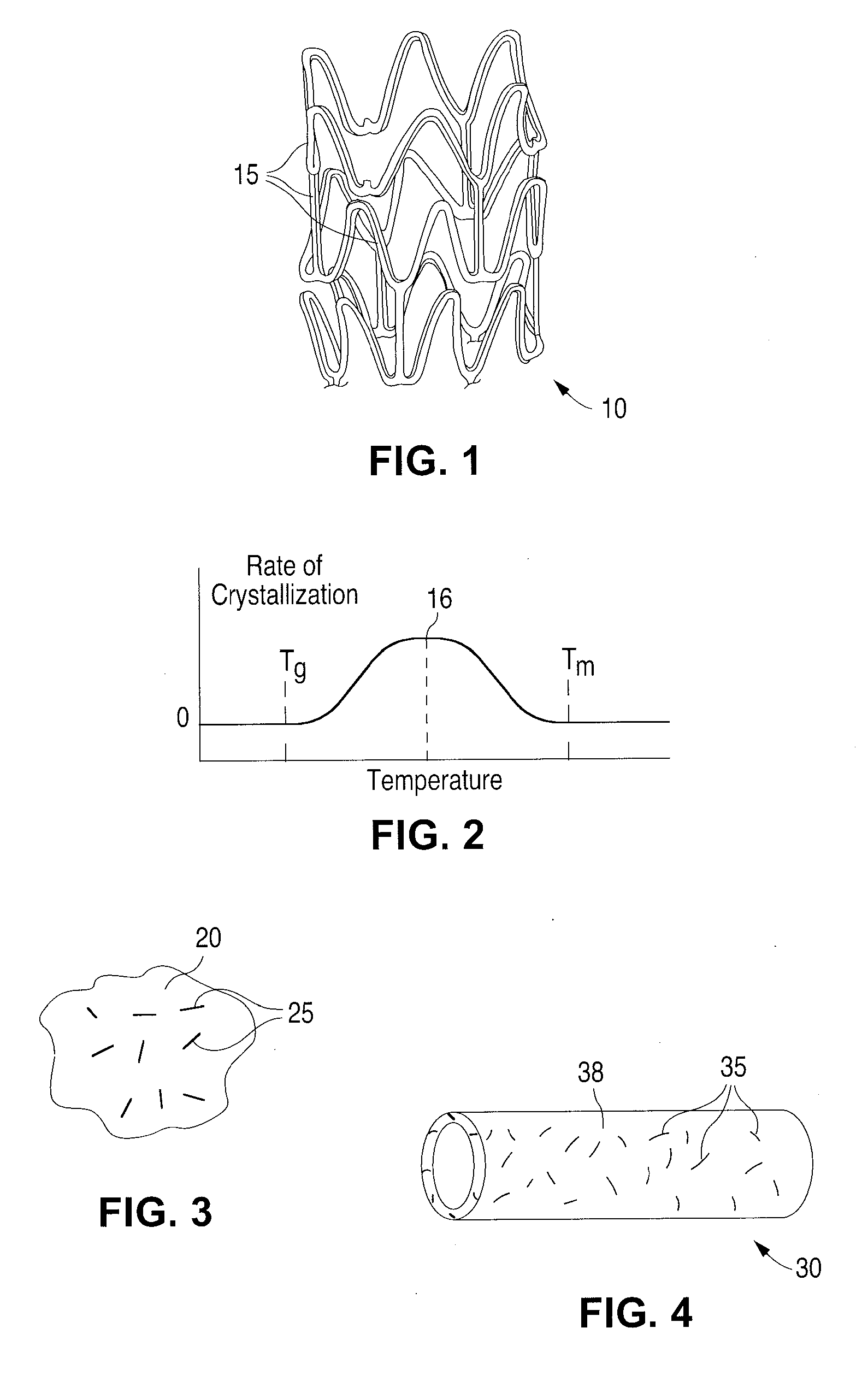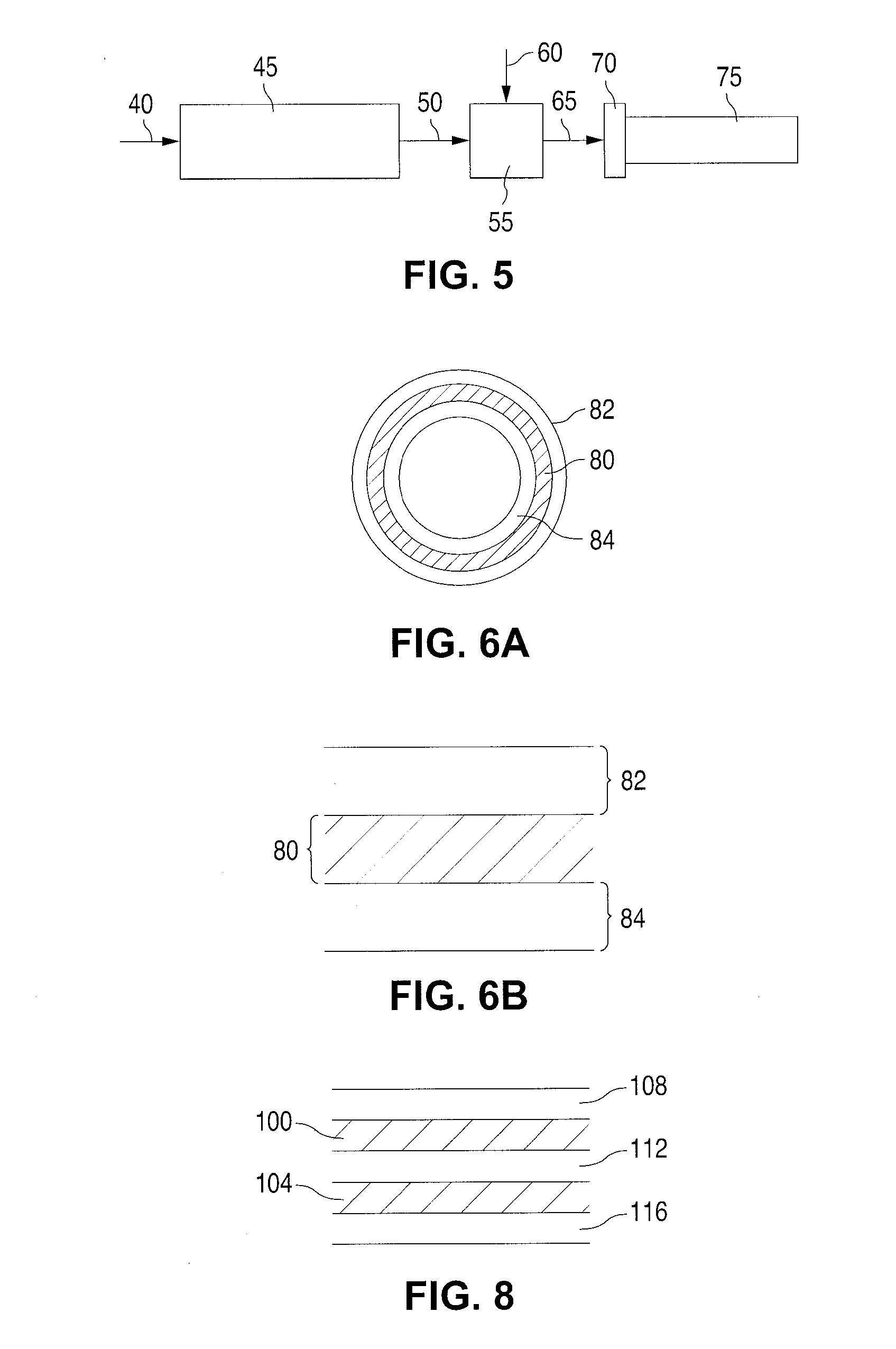Fiber Reinforced Composite Stents
a composite stent and fiber technology, applied in the direction of prosthesis, textiles and paper, woven fabrics, etc., can solve the problems of insufficient radial strength, the stent pattern subject to substantial deformation tends the localized portions of the stent pattern subject to substantial deformation tend to be the most vulnerable to failure, so as to reduce the radial profile of the tube
- Summary
- Abstract
- Description
- Claims
- Application Information
AI Technical Summary
Benefits of technology
Problems solved by technology
Method used
Image
Examples
Embodiment Construction
[0060]Various embodiments of the present invention relate to composite polymeric biodegradable implantable medical devices and methods of making such devices. In general, a composite implantable medical device is a device which is made up of two or more macroscopically distinct materials that have different properties. The composite device as a whole may have desirable properties of two or more of the distinct materials. Therefore, desirable mechanical and / or degradation properties may be obtained through the use of a polymer composite structure.
[0061]For the purposes of the present invention, the following terms and definitions apply:
[0062]The “glass transition temperature,” Tg, is the temperature at which the amorphous domains of a polymer change from a brittle vitreous state to a solid deformable or ductile state at atmospheric pressure. In other words, the Tg corresponds to the temperature where the onset of segmental motion in the chains of the polymer occurs. When an amorphous...
PUM
| Property | Measurement | Unit |
|---|---|---|
| diameter | aaaaa | aaaaa |
| diameter | aaaaa | aaaaa |
| diameter | aaaaa | aaaaa |
Abstract
Description
Claims
Application Information
 Login to View More
Login to View More - R&D
- Intellectual Property
- Life Sciences
- Materials
- Tech Scout
- Unparalleled Data Quality
- Higher Quality Content
- 60% Fewer Hallucinations
Browse by: Latest US Patents, China's latest patents, Technical Efficacy Thesaurus, Application Domain, Technology Topic, Popular Technical Reports.
© 2025 PatSnap. All rights reserved.Legal|Privacy policy|Modern Slavery Act Transparency Statement|Sitemap|About US| Contact US: help@patsnap.com



